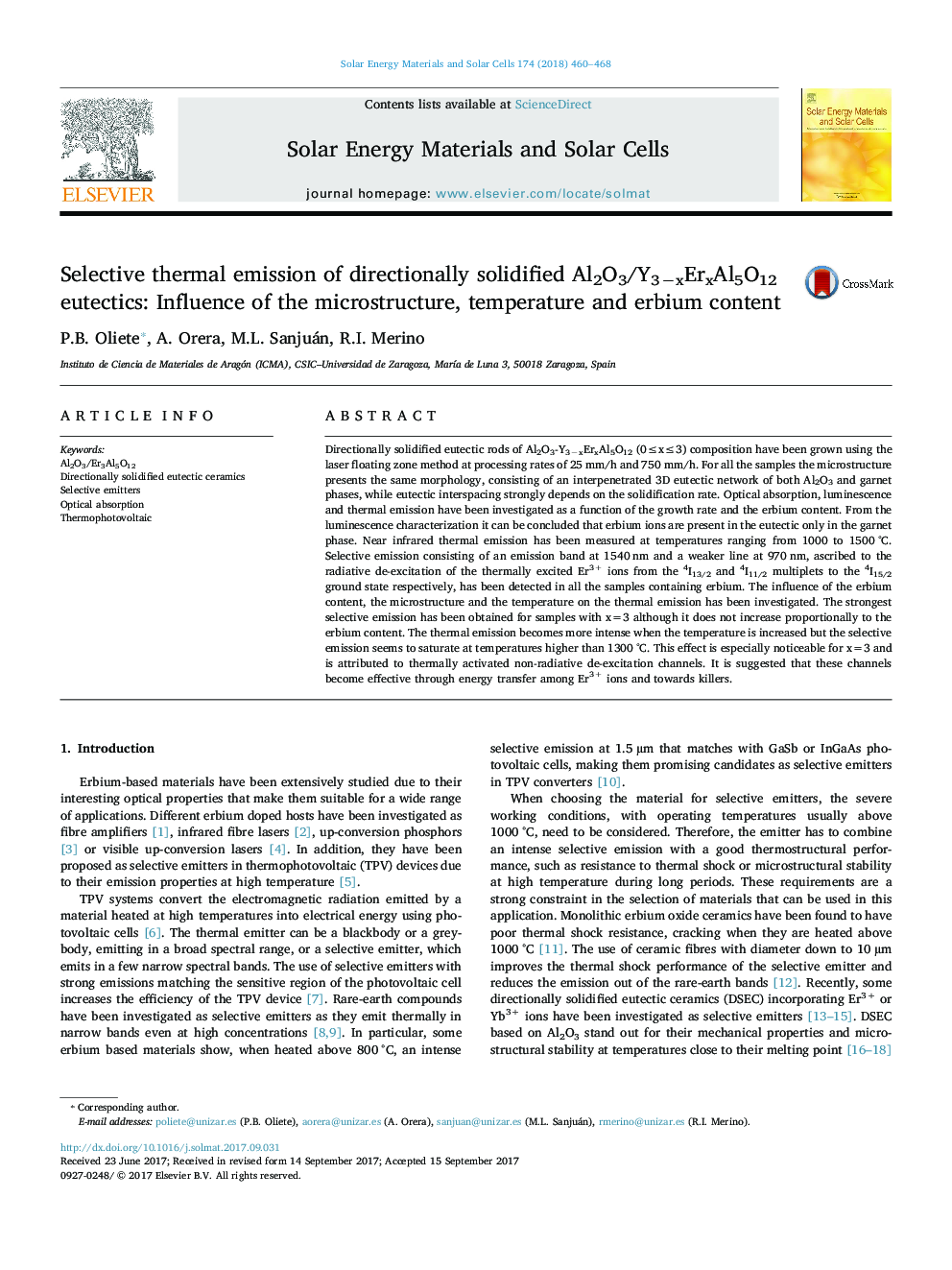| Article ID | Journal | Published Year | Pages | File Type |
|---|---|---|---|---|
| 6456723 | Solar Energy Materials and Solar Cells | 2018 | 9 Pages |
â¢Fabrication of directionally solidified Al2O3-Y3âxErxAl5O12 eutectic selective emitters.â¢High selective thermal emission matching with GaSb cell is measured up to 1500 °C.â¢Relationship between selective emission and composition and microstructure of emitters.â¢Modelling of the thermal saturation of the erbium selective emission.â¢Optimal compositions and operating conditions are established for TPV conversion.
Directionally solidified eutectic rods of Al2O3-Y3âxErxAl5O12 (0 ⤠x ⤠3) composition have been grown using the laser floating zone method at processing rates of 25 mm/h and 750 mm/h. For all the samples the microstructure presents the same morphology, consisting of an interpenetrated 3D eutectic network of both Al2O3 and garnet phases, while eutectic interspacing strongly depends on the solidification rate. Optical absorption, luminescence and thermal emission have been investigated as a function of the growth rate and the erbium content. From the luminescence characterization it can be concluded that erbium ions are present in the eutectic only in the garnet phase. Near infrared thermal emission has been measured at temperatures ranging from 1000 to 1500 °C. Selective emission consisting of an emission band at 1540 nm and a weaker line at 970 nm, ascribed to the radiative de-excitation of the thermally excited Er3+ ions from the 4I13/2 and 4I11/2 multiplets to the 4I15/2 ground state respectively, has been detected in all the samples containing erbium. The influence of the erbium content, the microstructure and the temperature on the thermal emission has been investigated. The strongest selective emission has been obtained for samples with x=3 although it does not increase proportionally to the erbium content. The thermal emission becomes more intense when the temperature is increased but the selective emission seems to saturate at temperatures higher than 1300 °C. This effect is especially noticeable for x=3 and is attributed to thermally activated non-radiative de-excitation channels. It is suggested that these channels become effective through energy transfer among Er3+ ions and towards killers.
Graphical abstractDownload high-res image (222KB)Download full-size image
